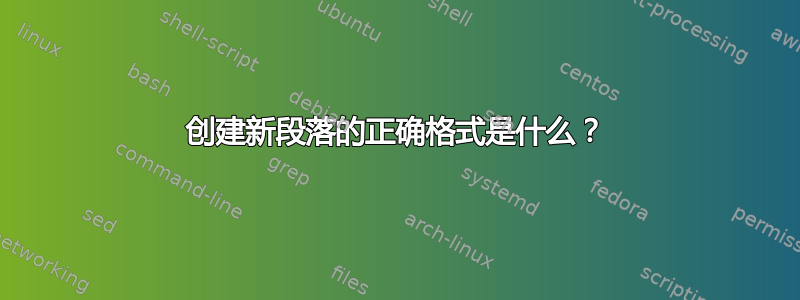
答案1
您显示的输入不会产生您显示的输出。对于所有章节标题,无论您是否在源代码中的标题后留空行,您都会得到相同的输出。
\documentclass{article}
\begin{document}
\paragraph{title} hi a new text
or
\paragraph{Title}
hi a new text
\end{document}
请注意,尽管它的名字不太恰当\paragraph,但它不是用于开始段落,而是第 4 级节标题,在之后使用\subsubsection。如果您告诉 LaTeX 以更大的深度编号,则最容易看到这一点,如果您添加
\setcounter{secnumdepth}{4}
对于上述情况,输出为
由于示例缺失,因此出现 0.0.0 \section,\subsection并且\subsubsection。
节标题的样式、运行或显示(图像中显示的两种样式)是文档级别设置,您可以将其应用于所有节,而不仅仅是段落。默认情况下,标准类设置 4 级标题运行,如图所示,但您可以轻松指定它们设置为显示。使用类似的包secsty或简单地复制定义article并更改一个参数。
由制作
\documentclass{article}
\makeatletter
\renewcommand\paragraph{\@startsection{paragraph}{4}{\z@}%
{3.25ex \@plus1ex \@minus.2ex}%
{5pt}% was {-1em} negative implies run-in, positive implies display
{\normalfont\normalsize\bfseries}}
\makeatother
\begin{document}
\paragraph{title} hi a new text
or
\paragraph{Title}
hi a new text
\end{document}
以上所有内容都是关于第 4 级子小节(以 开头\paragraph)的,文本段落不需要任何标记,只需用空行(\par)将它们分隔开:
\documentclass{article}
\begin{document}
A paragraph of text doesn't use a \verb|\paragraph| command.
Very few documents have a 4 levels of sectioning and need \verb|\paragraph|.
This is a new paragraph just following the blank line
that ended the previous one.
\end{document}







